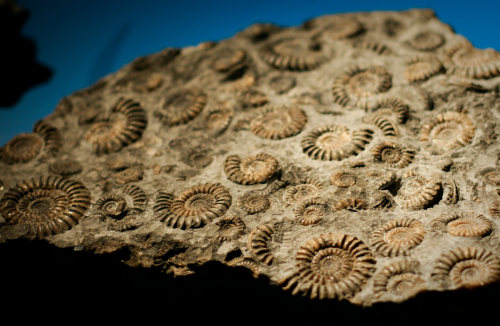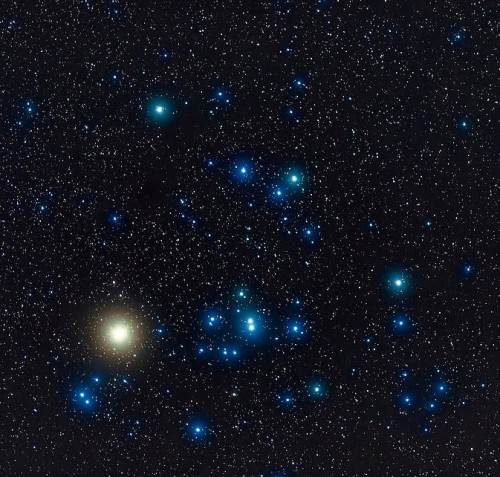Timelapse View Of Clouds Over The Rugged Terrain Of Northeast India, During Monsoon Rain Season.
Timelapse view of clouds over the rugged terrain of northeast India, during Monsoon rain season.
More Posts from Starry-shores and Others

Scene from an ancient sea floor, as if it happened yesterday, however, these are from Permian period (~299–251 million years ago). Some of these fossilized bivalve shells are still articulated, meaning, left and right shells are still closed together. This tells you that particular animal specimen was undisturbed since its death, until now. The hard rock that envelops these shells was once a soft sediment in which these molluscs lived.
South coast NSW, Australia

Ctenophora, Comb Jellies

Welcome to….DEVONIAN PARK. Please don’t tap the glass (the dunks are very sensitive).

The Ammonoids The Ammonoids are a subclass of cephalopods that inhabited the oceans from the Devonian some 416 million years ago until they went extinct some 65 million years ago. The species evolved and dispersed rapidly around the world and so are some of the best guide fossils for dating the strata in which they are found.
Keep reading
Gamma-ray Bursts: Black Hole Birth Announcements
Gamma-ray bursts are the brightest, most violent explosions in the universe, but they can be surprisingly tricky to detect. Our eyes can’t see them because they are tuned to just a limited portion of the types of light that exist, but thanks to technology, we can even see the highest-energy form of light in the cosmos — gamma rays.
So how did we discover gamma-ray bursts?
Accidentally!

We didn’t actually develop gamma-ray detectors to peer at the universe — we were keeping an eye on our neighbors! During the Cold War, the United States and the former Soviet Union both signed the Nuclear Test Ban Treaty of 1963 that stated neither nation would test nuclear weapons in space. Just one week later, the US launched the first Vela satellite to ensure the treaty wasn’t being violated. What they saw instead were gamma-ray events happening out in the cosmos!

Things Going Bump in the Cosmos
Each of these gamma-ray events, dubbed “gamma-ray bursts” or GRBs, lasted such a short time that information was very difficult to gather. For decades their origins, locations and causes remained a cosmic mystery, but in recent years we’ve been able to figure out a lot about GRBs. They come in two flavors: short-duration (less than two seconds) and long-duration (two seconds or more). Short and long bursts seem to be caused by different cosmic events, but the end result is thought to be the birth of a black hole.

Short GRBs are created by binary neutron star mergers. Neutron stars are the superdense leftover cores of really massive stars that have gone supernova. When two of them crash together (long after they’ve gone supernova) the collision releases a spectacular amount of energy before producing a black hole. Astronomers suspect something similar may occur in a merger between a neutron star and an already-existing black hole.

Long GRBs account for most of the bursts we see and can be created when an extremely massive star goes supernova and launches jets of material at nearly the speed of light (though not every supernova will produce a GRB). They can last just a few seconds or several minutes, though some extremely long GRBs have been known to last for hours!

A Gamma-Ray Burst a Day Sends Waves of Light Our Way!
Our Fermi Gamma-ray Space Telescope detects a GRB nearly every day, but there are actually many more happening — we just can’t see them! In a GRB, the gamma rays are shot out in a narrow beam. We have to be lined up just right in order to detect them, because not all bursts are beamed toward us — when we see one it’s because we’re looking right down the barrel of the gamma-ray gun. Scientists estimate that there are at least 50 times more GRBs happening each day than we detect!

So what’s left after a GRB — just a solitary black hole? Since GRBs usually last only a matter of seconds, it’s very difficult to study them in-depth. Fortunately, each one leaves an afterglow that can last for hours or even years in extreme cases. Afterglows are created when the GRB jets run into material surrounding the star. Because that material slows the jets down, we see lower-energy light, like X-rays and radio waves, that can take a while to fade. Afterglows are so important in helping us understand more about GRBs that our Neil Gehrels Swift Observatory was specifically designed to study them!

Last fall, we had the opportunity to learn even more from a gamma-ray burst than usual! From 130 million light-years away, Fermi witnessed a pair of neutron stars collide, creating a spectacular short GRB. What made this burst extra special was the fact that ground-based gravitational wave detectors LIGO and Virgo caught the same event, linking light and gravitational waves to the same source for the first time ever!

For over 10 years now, Fermi has been exploring the gamma-ray universe. Thanks to Fermi, scientists are learning more about the fundamental physics of the cosmos, from dark matter to the nature of space-time and beyond. Discover more about how we’ll be celebrating Fermi’s achievements all year!
Make sure to follow us on Tumblr for your regular dose of space: http://nasa.tumblr.com
-
 sparkyrocketscience reblogged this · 4 years ago
sparkyrocketscience reblogged this · 4 years ago -
 rittajess1234 liked this · 4 years ago
rittajess1234 liked this · 4 years ago -
 sirmedicknight reblogged this · 4 years ago
sirmedicknight reblogged this · 4 years ago -
 relatablepicturesofgarnet liked this · 4 years ago
relatablepicturesofgarnet liked this · 4 years ago -
 ghpicsnmore1 liked this · 4 years ago
ghpicsnmore1 liked this · 4 years ago -
 massivehorsetrashartisan liked this · 4 years ago
massivehorsetrashartisan liked this · 4 years ago -
 fatya liked this · 4 years ago
fatya liked this · 4 years ago -
 sakon76 liked this · 4 years ago
sakon76 liked this · 4 years ago -
 bibliophiliosaurus reblogged this · 4 years ago
bibliophiliosaurus reblogged this · 4 years ago -
 interstate-5 liked this · 4 years ago
interstate-5 liked this · 4 years ago -
 terrorwoods liked this · 4 years ago
terrorwoods liked this · 4 years ago -
 sorinkavglazy liked this · 4 years ago
sorinkavglazy liked this · 4 years ago -
 danykha liked this · 4 years ago
danykha liked this · 4 years ago -
 leaguehysteria liked this · 4 years ago
leaguehysteria liked this · 4 years ago -
 sallyawayfromhome liked this · 4 years ago
sallyawayfromhome liked this · 4 years ago -
 starry-shores reblogged this · 4 years ago
starry-shores reblogged this · 4 years ago -
 an-abyss-called-life liked this · 4 years ago
an-abyss-called-life liked this · 4 years ago -
 sergii-sergii liked this · 4 years ago
sergii-sergii liked this · 4 years ago -
 anxiouswarfighter reblogged this · 4 years ago
anxiouswarfighter reblogged this · 4 years ago -
 anxiouswarfighter liked this · 4 years ago
anxiouswarfighter liked this · 4 years ago -
 ghostlineage liked this · 4 years ago
ghostlineage liked this · 4 years ago -
 acevisiontreks liked this · 4 years ago
acevisiontreks liked this · 4 years ago -
 semipreciouspearl reblogged this · 4 years ago
semipreciouspearl reblogged this · 4 years ago -
 annihilorak reblogged this · 4 years ago
annihilorak reblogged this · 4 years ago -
 annihilorak liked this · 4 years ago
annihilorak liked this · 4 years ago -
 auroradragon1 liked this · 4 years ago
auroradragon1 liked this · 4 years ago -
 sunshinesalmon liked this · 4 years ago
sunshinesalmon liked this · 4 years ago -
 earthstory reblogged this · 4 years ago
earthstory reblogged this · 4 years ago

Amateur astronomer, owns a telescope. This is a side blog to satiate my science-y cravings! I haven't yet mustered the courage to put up my personal astro-stuff here. Main blog : @an-abyss-called-life
212 posts











